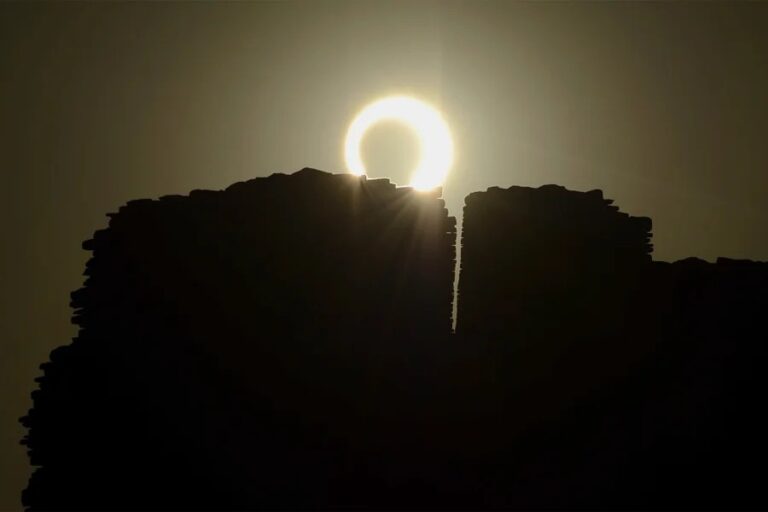The evolution of digital photography
In this post we will talk about how the development of information technology has become an incentive for the further development of photography. Of course, we will only talk about digital photography, otherwise there is a great risk of digging into the abyss of time before daguerreotypes and a pinhole camera.
Therefore, we suggest taking 1970 as the starting point, when a prototype of the first video camera was created on the basis of a charge-coupled device (CCD).
 CCD
CCD
CCD vs. CMOS
So, in 1969, two resourceful US citizens George Smith and Willard Boyle invented the device with a charge-coupled device, and a year later in 1970 they were able to capture images using CCD-rulers. A logical continuation of this was the creation of CCDs.
Around the same time, CMOS matrices are created (they are also CMOS, complementary metal oxide semiconductor structure, but even for the Russian ear, apparently, CMOS turned out to be nicer). Then, in the late 1960s, CMOS already showed an acceptable level of photosensitivity, but in CCDs this level was much higher. As, however, and the quality of the output image.
At this stage, the most important technology development engine, money, entered into business. The right budget in the right hands sometimes works wonders. Hands belonged to Kazuo Iwama, an experienced engineer and head of Sony, and the budget, as you might guess, was Sony. The corporation then made video cameras and noticed a good opportunity. She began to invest in CCD very briskly, to pull the technology to a new level and put such matrices into her video cameras that you’ll download it.
The Japanese worked actively. After 5 years, in 1975, the introduction of CCDs into production became very active. And after 14 years, in 1989, CCDs were the gut of almost all video cameras in the world (97%).
Kazuo so actively developed the technology that after death, a CCD chip was installed on his tombstone in memory of the achievements.
 Norio Oga, president of Sony from 1982 to 1995, installed a CCD chip on a tombstone Kazuoto emphasize once again the contribution that he made to the development of technology and the corporation itself. Source – Sony Official Website
Norio Oga, president of Sony from 1982 to 1995, installed a CCD chip on a tombstone Kazuoto emphasize once again the contribution that he made to the development of technology and the corporation itself. Source – Sony Official Website
 A source
A source
In the same 1975, the guys from Kodak made the world's first filmless camera with a 0.01 megapixel CCD. (by current standards, since the term “megapixel” itself did not exist then).
 The world's first digital camera and its creator – Kodak engineer Steve Sasson
The world's first digital camera and its creator – Kodak engineer Steve Sasson
Steve and his colleagues had to solve several problems at once, as befits true pioneers. And all of them are associated with the storage of such images. It was decided to use a new (at that time) process called digitalization (this is when electronic pulses are converted to numbers. When this is sorted out, a second task has surfaced – how now is it all right to store it in RAM, so that later it can normally transfer information to magnetic tape. As a result, the first digital camera saw the light, which included a portable cassette recorder, an analog-to-digital converter, 16 batteries (nickel-cadmium) and dozens of circuits on 6 boards.
The quality of the pictures for that time, taking into account both the capabilities of the camera itself and the screens from which the pictures were viewed, can be estimated as quite good.

In 1981, Sony created the Mavica video camera (this is a thing that wrote static images on video tapes, then it was normal).
CMOS did not lag behind, and already in the early 1990s there was the first technological leap that helped this kind of matrix well: submicron photolithography was pumped to a level that allowed the use of finer compounds in CMOS sensors. Thanks to this, photosensitivity has grown significantly (a larger percentage of the irradiated surface of the matrix).
And then another giant entered the business with the same gigantic budget, a thirst for knowledge and technology improvement – NASA.
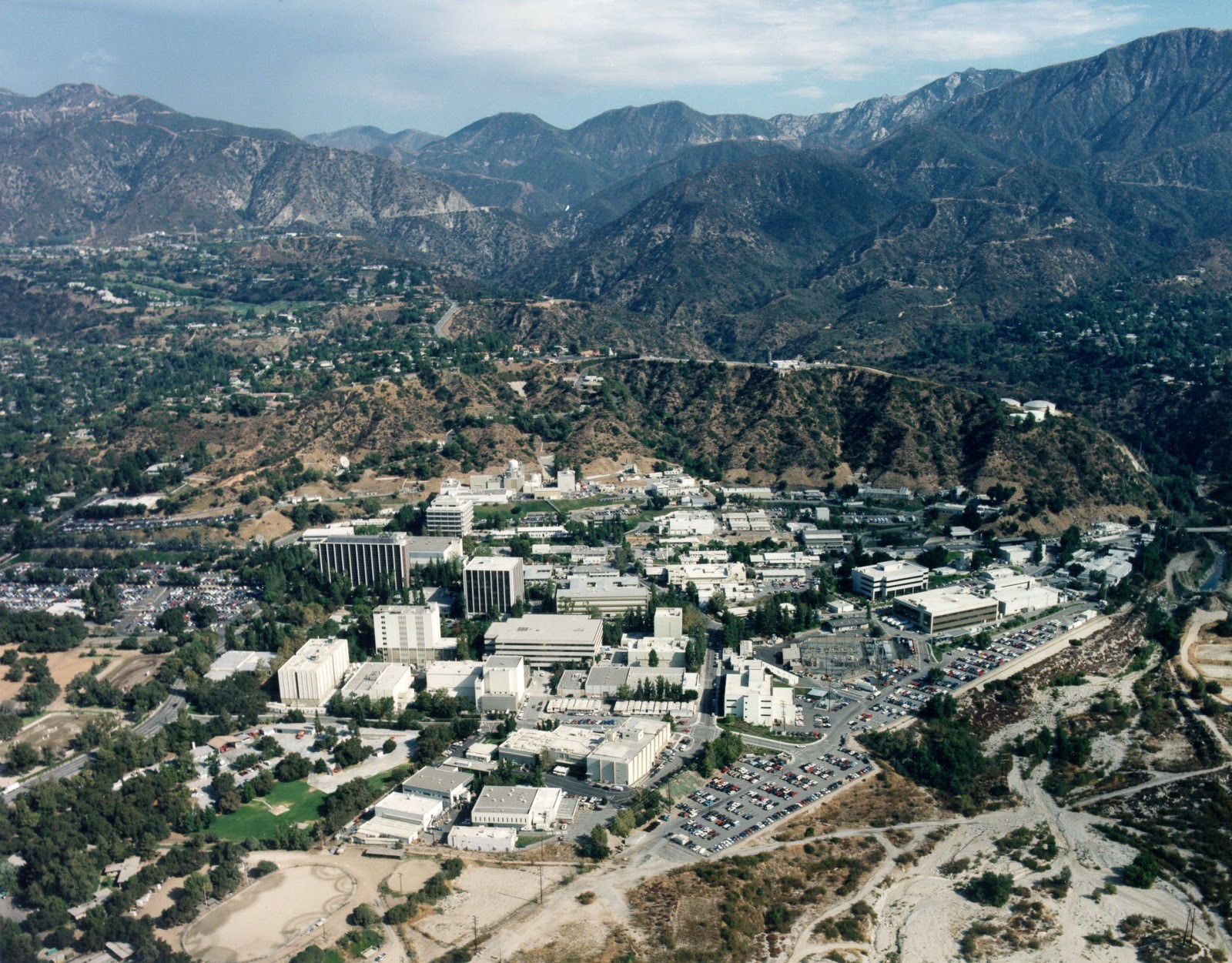 NASA Jet Propulsion Laboratory, near Los Angeles (Wikipedia)
NASA Jet Propulsion Laboratory, near Los Angeles (Wikipedia)
It was here that in 1993 they created the Active-Pixel Sensor (APS), which allowed the CMOS matrices to become the way we know them.
The Jet Propulsion Laboratory justified its name perfectly even in this – after the creation of the APS-matrix, CMOS became a full-fledged alternative to CCD (CCD). Each technology has its pros and cons, but the main advantages of CMOS are lower power consumption and not so much a fear of spotlight. And then Sony specialists, realizing that CMOS is also a good thing, which can be developed no worse than before CCD, pumped the technology using Backlight illumination.
For those interested – the article CMOS vs CCD (in English).
All this made the technology more accessible for production, which means that it affected the price in a direction convenient for the buyer. There were more and more cameras and camcorders with such arrays, and they themselves were more accessible, which helped even a novice photographer to acquire a good tool. And as soon as digital cameras became more accessible, they very quickly pushed filmmakers out of the market.
Megapixels and memory cards
The term “megapixel” was coined by Kodak when, in 1986, they made an industrial monochrome 1.4 Mpix CCD. It is now normal that a person has 20 megapixels in a smartphone. And even more.

For example, Huawei mate 20 Pro. Three main cameras – 40 + 20 + 8 MP (a beautiful case with Arnold can be purchased here).
About 20 years ago, everything was a little different.
1991 – Kodak and Nikon make the Kodak DCS100, the first digital SLR.
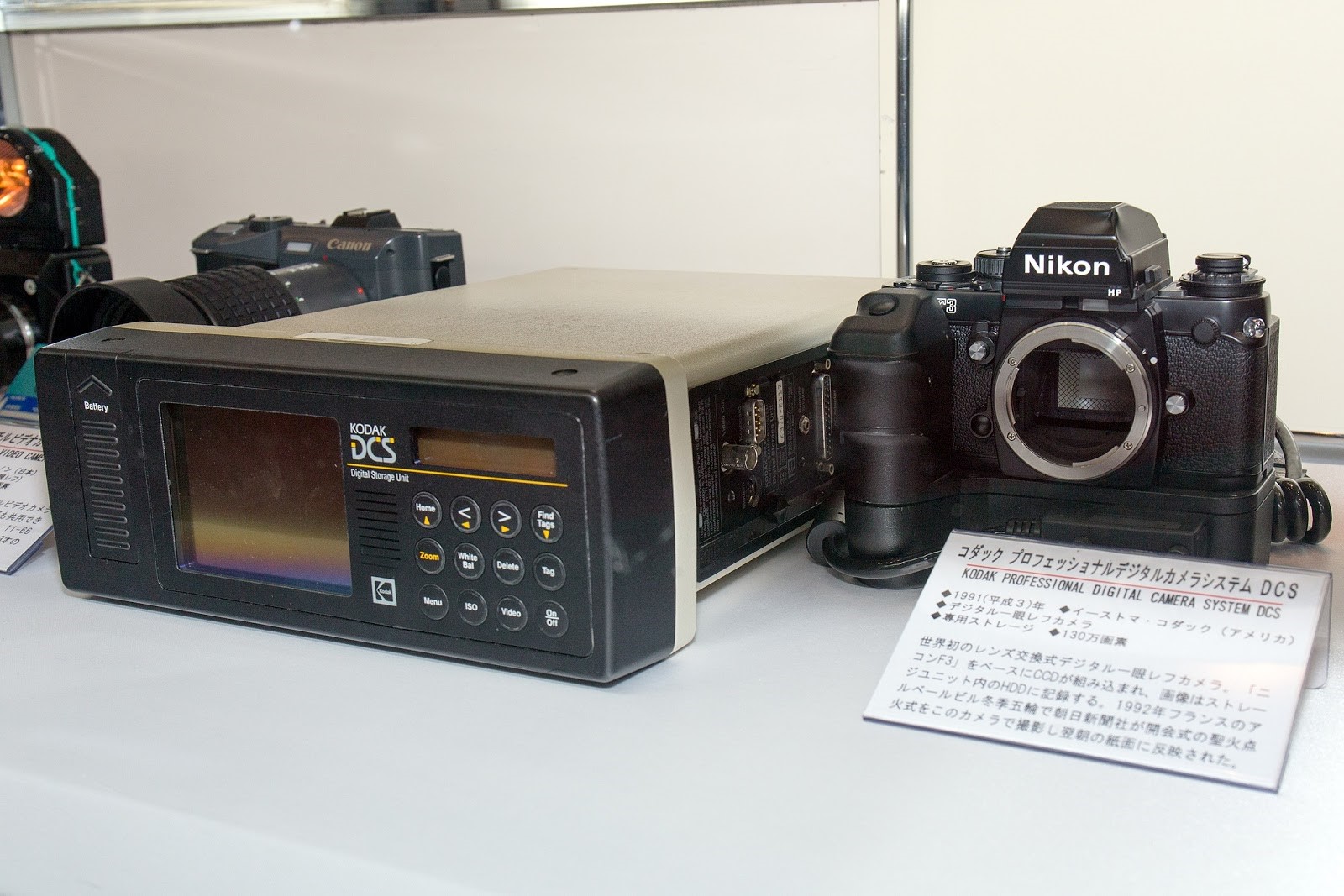 Kodak DCS100 with Nikon lettering. Why so – see below.
Kodak DCS100 with Nikon lettering. Why so – see below.
 A source
A source
The thing under the camera is what used to be used instead of SD cards. This is the Digital Storage Unit on which the DSLR kept all the photos taken. Well, OK, not all, but how much was placed on 200 megabytes of a 3.5-inch hard. About 156 photos without compression or 600 with compression. A twisted cord like a cordless phone made it possible to put the storage kit on a table or shelf during the shooting process, or even put it gently in a backpack behind. The screen allowed you to see if the photo turned out or not, and you could also put an external keyboard and add useful descriptions or a hashtag to the photo #nofiltres.
The issue with the buildings was resolved quite simply. Then there were no industrial orders for digital cameras, respectively, cases were not mass-produced, and printing them as prototypes on 3D printers was difficult due to the lack of 3D printers. Therefore, the guys just took the case from the existing film cameras, and based on them created the future. In this case, the carcass was the legendary film Nikon F3. It only remained to hang a matrix on it, a battery and other high-tech good.
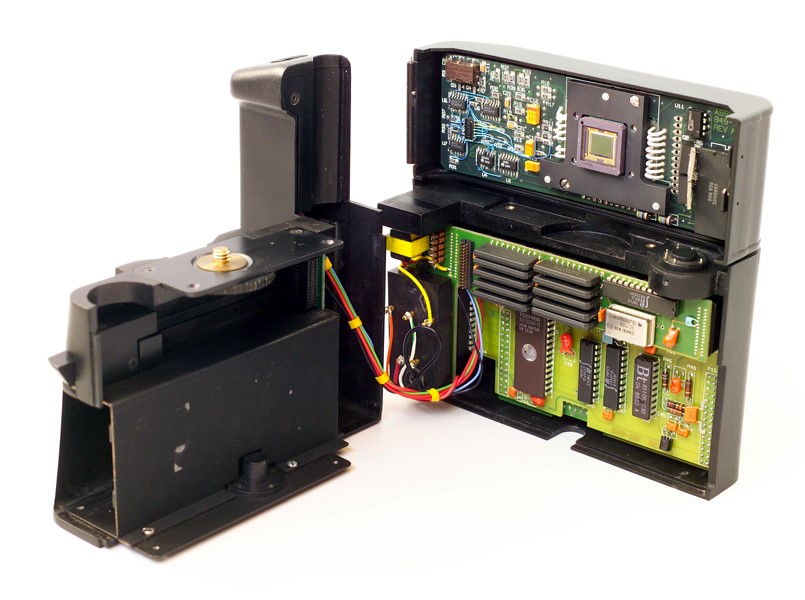 A source
A source
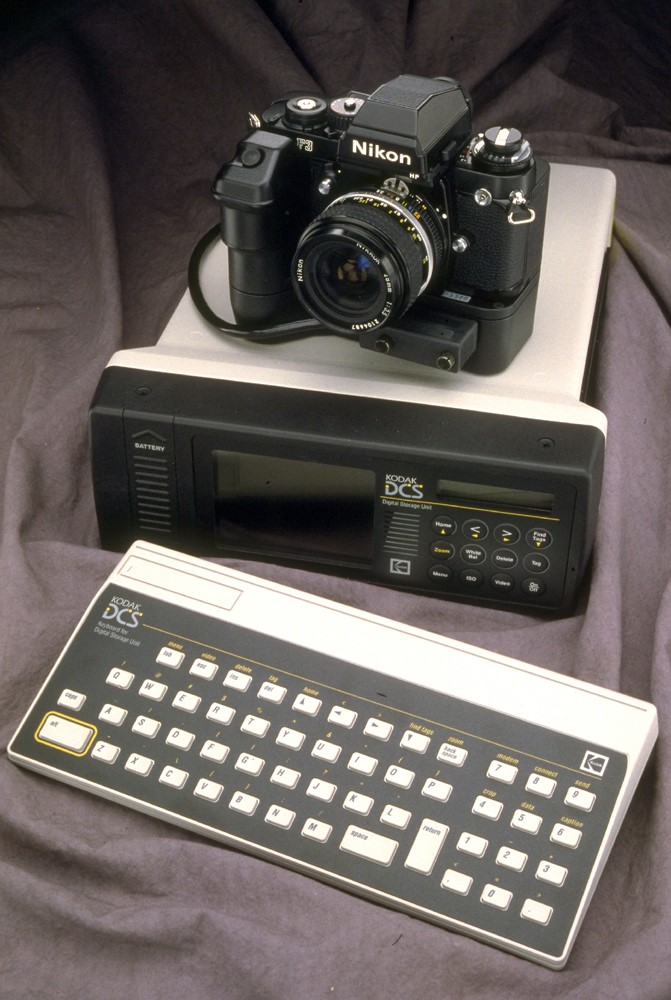 A source
A source
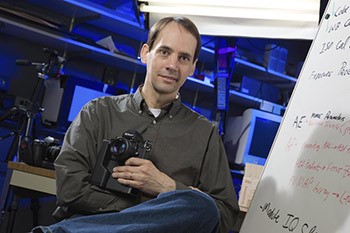 Jim McGarvey, KODAK Lead Engineer (DSLR), with March Camera in hand.
Jim McGarvey, KODAK Lead Engineer (DSLR), with March Camera in hand.
Pay attention to the bottom of the camera.
 1989 year
1989 year
This black case contained memory, 5 DRAM dies per 1 megabyte, which made it possible to store as many as 4 (four) full-size photographs outside the Storage Kit.
 A source
A source
Speaking of compression. The technology of JPEG-compression of static digital images was approved as a recommendation of T.81 in 1998. SanDisk created the CF (CompactFlash) format for storing this graphic stuff. The evolution of the format mainly concerned TTX changes in terms of image recording speed and storage capacity of the drive itself, as well as the number of pins in the card itself.
And although significant progress has been achieved (you can go and buy a 512 gigabyte card with good read-write performance), but in a number of parameters they are still inferior to SD cards. SD is such a thing in itself, which is rather monolithic and which is difficult to spoil when you try to insert it into the reader or the camera from the wrong angle, but CF can suffer in this case (pins will bend, for example). Well, actually, the size of the card itself.
Weighed image storage system along with 3.5 kg batteries. All together with the camera – 5 kg. It becomes clear why there were so few frankly frail guys among the then photographers.
Such cameras themselves gave out pictures of quite acceptable quality, given that this is just a carcass from a film player, from which they made a digital camera, simply adding a matrix and several boards.
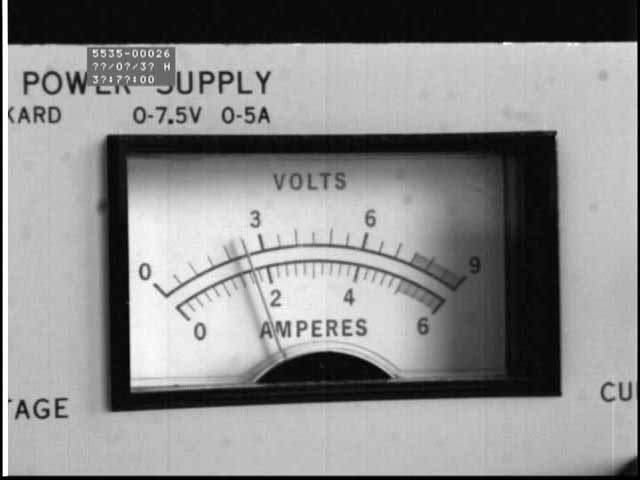 A source
A source
 A source
A source
 A source
A source
Now very budget Chinese smartphones sometimes shoot worse than the first digital cameras, which are now over 30 years old. All photos – 640 * 480 pixels., A quarter of the maximum resolution of the camera (more photos here).
There were such storage systems for images – not such a hefty, but still heavy aluminum gizmo.
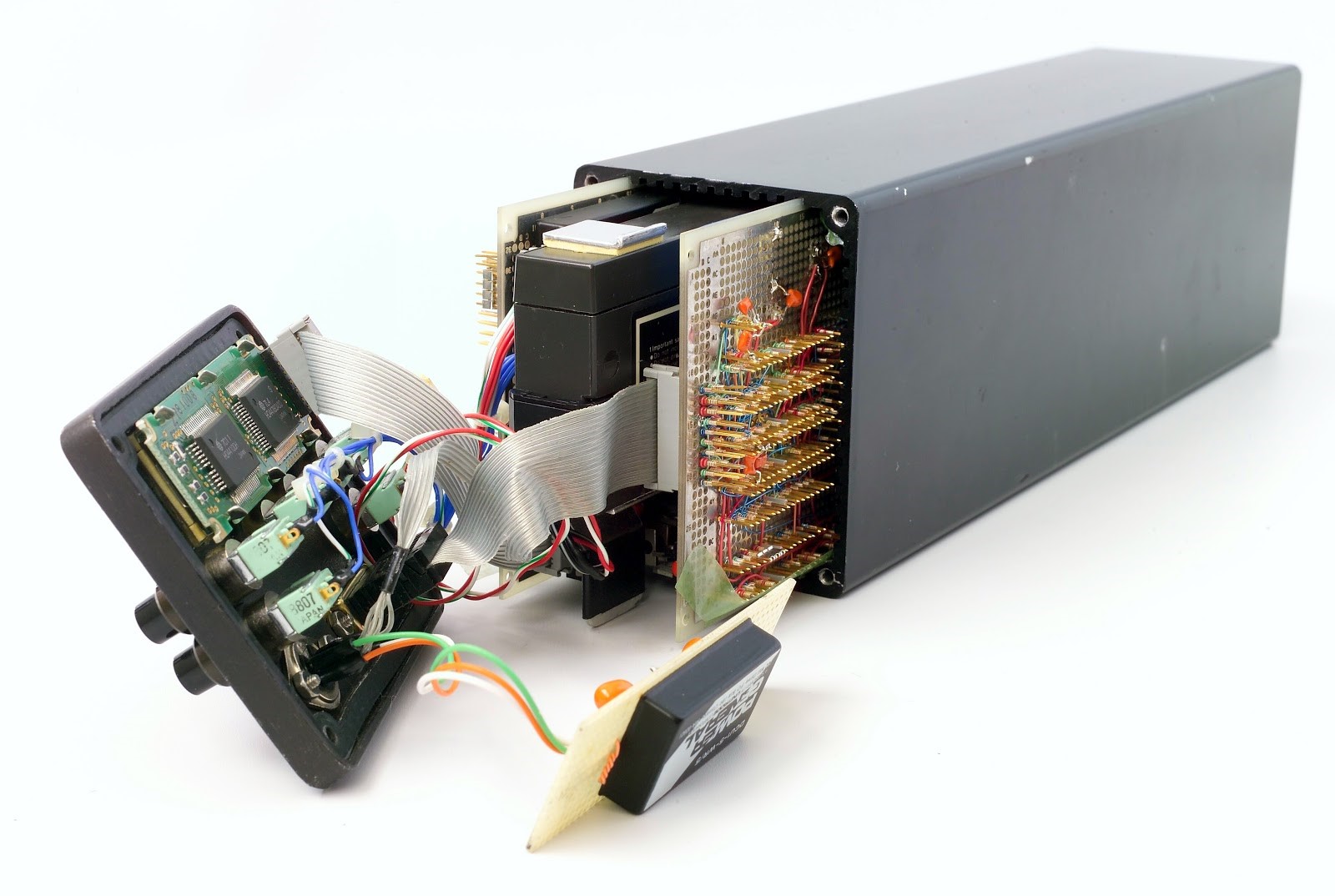 1988 year
1988 year
16 megabytes and the ability to store 12 full-size photos or 48 images with a resolution of 640×480 pixels. Full performance characteristics can be found here.
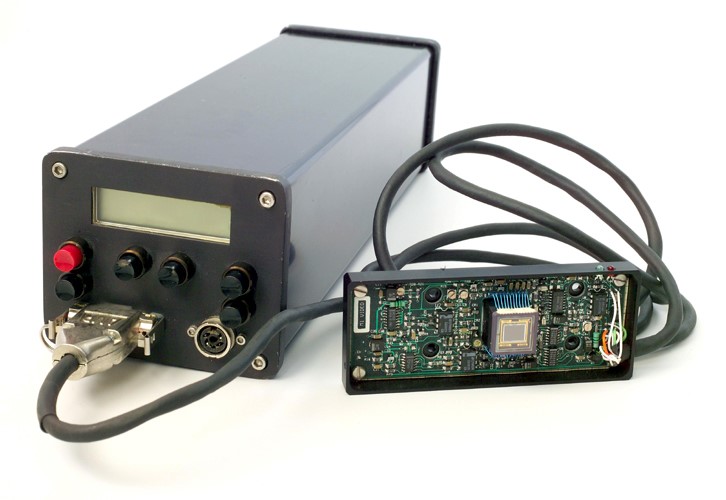 A source
A source
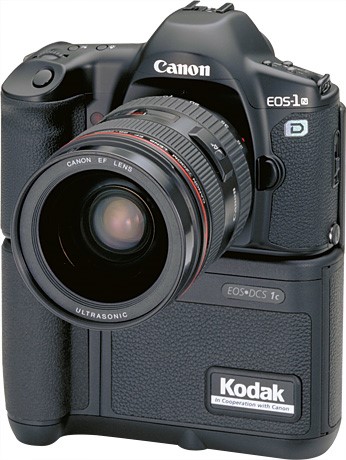 Canon EOS DCS 1 (aka Kodak Professional EOS-DCS 1)
Canon EOS DCS 1 (aka Kodak Professional EOS-DCS 1)
Now more wild is not the fact that this thing cost about $ 40,000 (2,482,420 rubles at the time of publication of the article), but the fact that competitors have nameplates on one gadget.
One way or another in the photo – the record holder for megapixels for 1995. There are as many as 6, APS-H format matrix.
And in zero, the technology has already reached 20 megapixels. As before a kind of standard for advanced cameras. Of course, there were soap dishes with a much lower resolution.
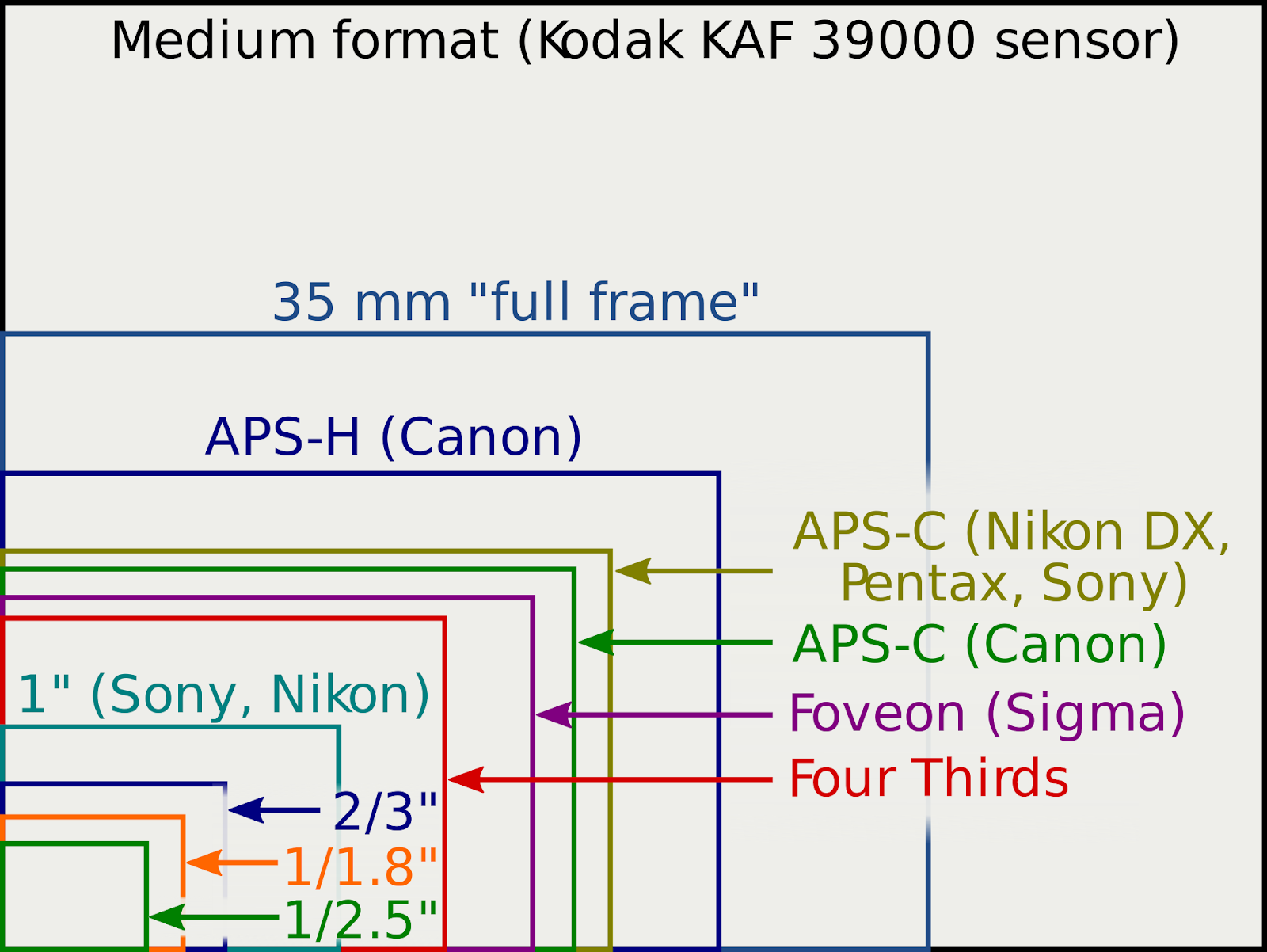 Comparison of matrix sizes, Wikipedia
Comparison of matrix sizes, Wikipedia
Years passed. Companies continued to improve matrices, adopted new standards (in terms of matrix sizes for cameras and file storage formats). The cameras themselves were getting bigger. Prices for professional equipment began to at least partially remind affordable.
Mobile photography
And the smartphones have completely simplified the process. It all started the same on numbers that would seem ridiculous to today's reader.
The first camera phone was expectedly Japanese. There is a stereotype that Nokia was the first. No, they just had one of the first famous and with a good camera, N8 – 12 megapixels. on the phone at the time of 2010 it was generally wow. And there was also the first European camera phone, 7650, which immediately shot in jpeg 640×480 and could transmit the photos just taken via MMS.
But if you look at the story step by step, then first it was a phone from Kyocera (yes, yes, not only printers).
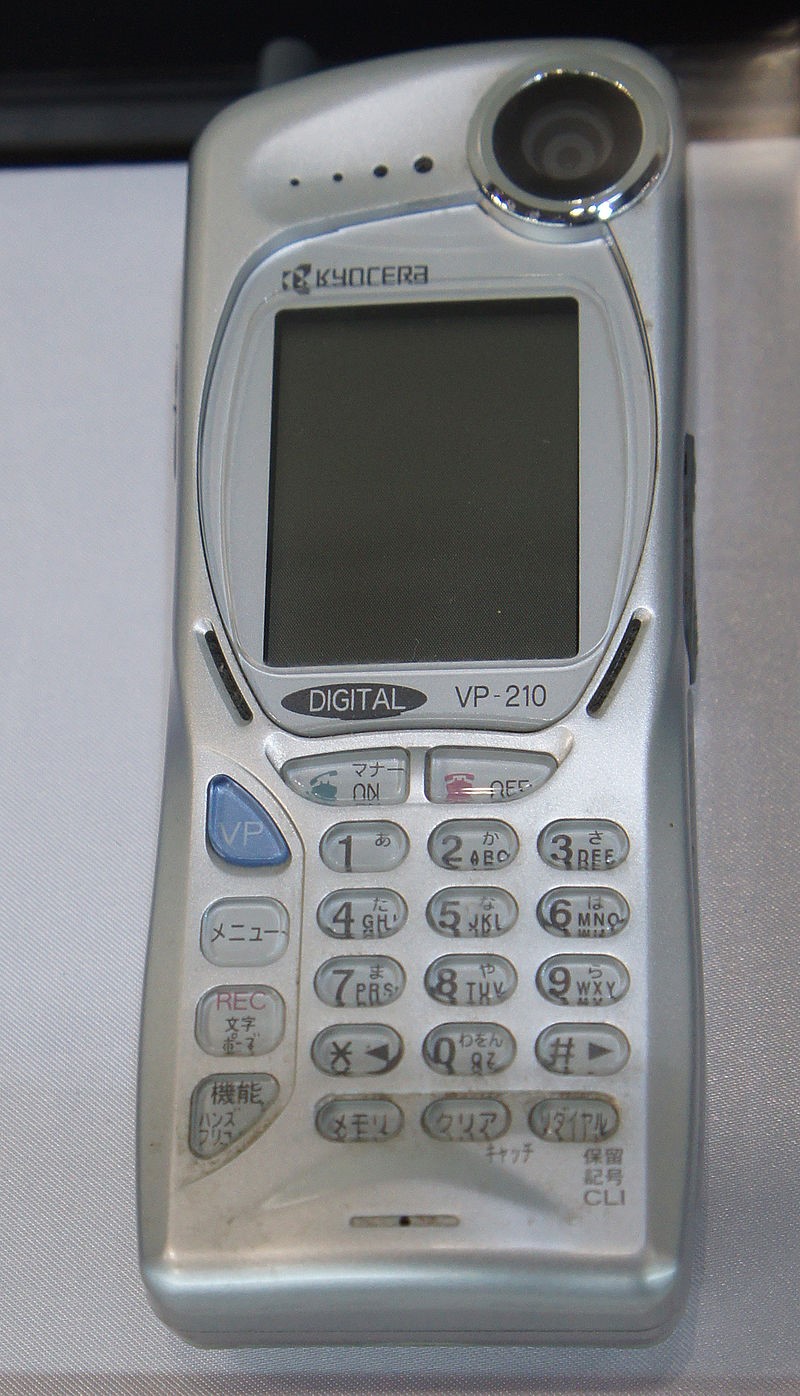 Wikipedia VP-210, 0.1 MP, 1999
Wikipedia VP-210, 0.1 MP, 1999
Then they made their camera phone in Sharp.
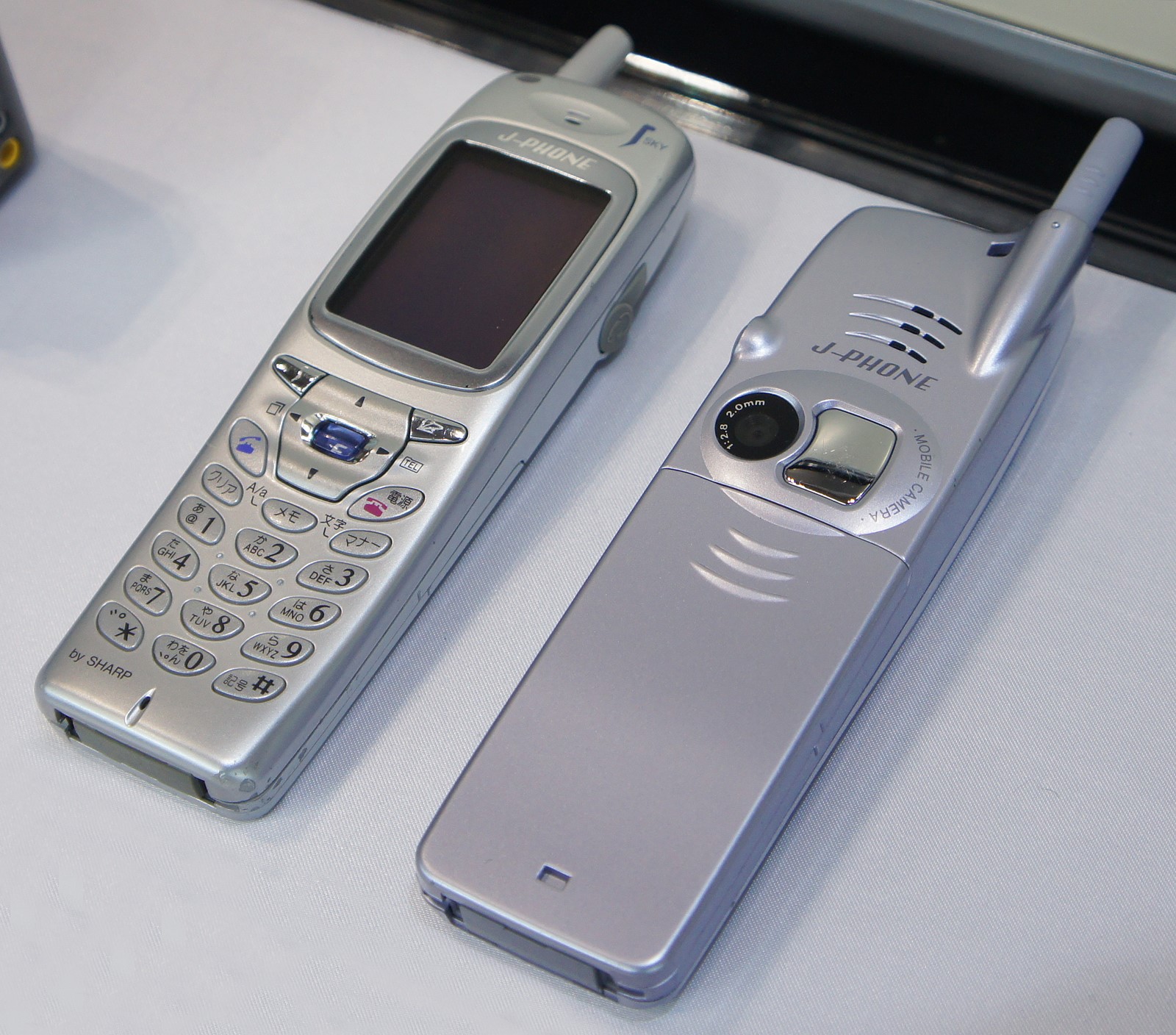 Wikipedia
Wikipedia
2000, almost a similar camera. Pay attention to the mirror on the rear panel – almost 20 years have passed, and they are again trying to put this idea on the conveyor.
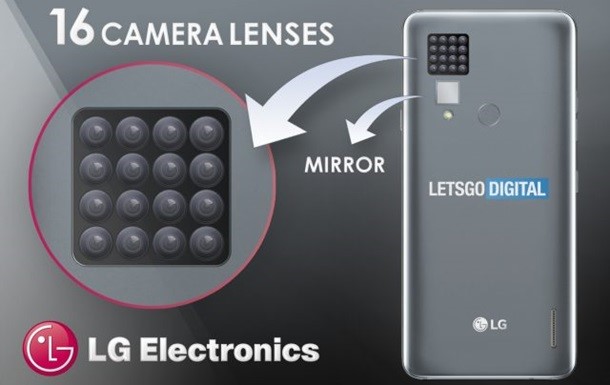 2018, LG and their smartphone with 16 cameras (patent).
2018, LG and their smartphone with 16 cameras (patent).
Further development was not long in coming – a series of cell phones with one megapixel cameras from different vendors, then a breakthrough in the form of 8 megapixels. in the phone from Samsung, the G800, and then the Nokia 808 PureView with a 41 megapixel sensor. and Lumia 920 with true optical stabilization.
Today
Now almost everyone has a smartphone in their pocket, whose photographic capabilities are quite comparable to digital soap dishes in the middle and upper price ranges. And some top models shoot almost like SLRs, although software is used for bokeh, and not the characteristics of the camera itself.
Here you can argue for a long time what is better and for what tasks – the camera of a top smartphone, a DSLR or a mirrorless mirror. Each type of camera will always have its own target audience and a range of tasks that can be solved only with this type of equipment.
The main thing is in another. Photography as a process, as art has become more than accessible. Thousands of people create beautiful pictures thanks to smartphones (and hundreds of thousands of other people shoot on these same smartphones so that they should never shoot at all). Professional competitions and exhibitions dedicated to mobilography are being established (in fact, like the exhibition from the Inventive Retail Group mentioned at the beginning of the post).
Photos began to occupy more space in the memory of devices and more space in our lives. All this time they have evolved along with technology and software. They became larger in resolution and richer in color, received additional buns (Live Photo, quick panorama creation, full-fledged portrait modes, a whole bunch of preset modes for shooting food, landscapes, cats, children).
The craving for self-expression through photos is also stimulated by social networks – the same Instagram, specially created in order to share successful shots of your interesting life (or attempts to expose it like that), many other photo services. The active interest in software for processing photos and videos (including AR / VR) from the largest players only emphasizes this fact.
Typically, various photo processing applications are usually hype in nature. The same PRISMA, MSQRD, Vinci were completely forgotten about six months later, as expected. The people returned to the classics – ordinary photos + all the same to digital retouching, rather than using programs that completely transform the photo. It's one thing when your photo turns into a stylization of an oil painting, it's even fun the first couple of times, another thing is FaceTune, with which lovely ladies can remove wrinkles from a picture that start appearing in the most unexpected places in a couple of clicks.
Not a single software – this is not the first year for fans not only to take pictures on the camera, but also to immediately share them on social networks, hybrids of the kind “camera-smartphone” are created, where the optics themselves seem to be good (definitely better than on average smartphone) , and as a software right away some Android with the ability to quickly publish pictures, share them, display on TVs and more. You can argue about the quality of such devices for a long time, since the camera is usually weaker there than the “clean” camera for the same money, and the smartphone part is usually truncated (special firmware on which you can install far from everything that you are used to on a smartphone. As a result – nedosmartfon-nedophotik.
Be that as it may, there is a demand for it, and the market could not help but respond.
The most famous of these combines is the Samsung GALAXY Camera.

Here you have good (for such sizes and those times) optics, Android, and 4G, which makes the software part more useful not only in the presence of wifi.
There were Nikon Coolpix S800C and a couple of Polaroids – SC1630 and iM1836.
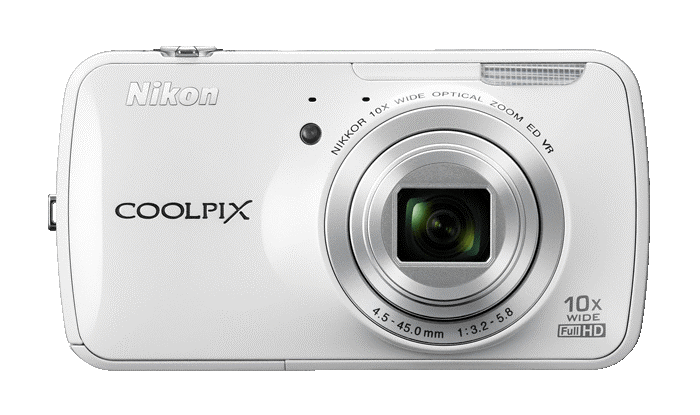 Nikon Coolpix S800C
Nikon Coolpix S800C
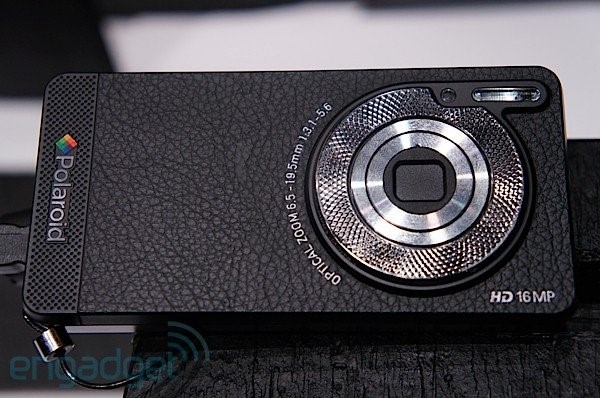 SC1630
SC1630
Then, for some time, these devices fell into deserved oblivion, because the flagship smartphones began to shoot no worse (well, except that the optical zoom is smaller so far), and they weighed several times less.
In the fall of 2018, the Chinese decided to revive this class of technology – craftsmen from Yongnuo made a mirrorless camera with interchangeable lenses on Android.
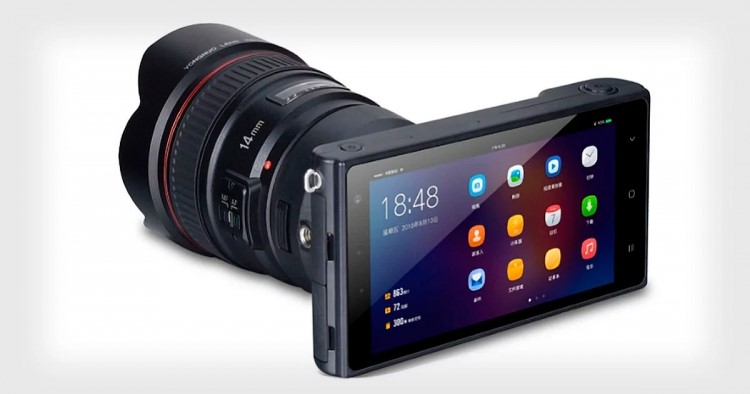 A source
A source
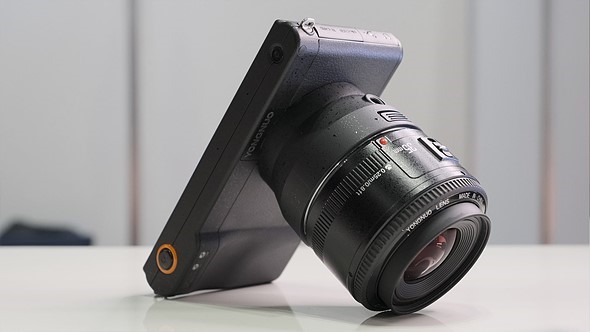 A source
A source
It already looks more serious than analogues. Sensor 16 MP Four tdirds and Canon EF lenses, a 5-inch touch screen, the ability to record video in 4K, 3 gigabytes of RAM and even a selfie camera. The camera is still sold in China with an EF mount. Official sales worldwide should begin in 2020.
Trends
It is good to observe trends not only based on the opinions of most consumers, but also at technology exhibitions. One of the main messages of Photokina 2018 (in 2019 it was decided not to conduct it) was the active development of mirrorless ones.
The Canon guys made the EOS R with the fastest (according to their assurances) focusing system, 0.05 s.
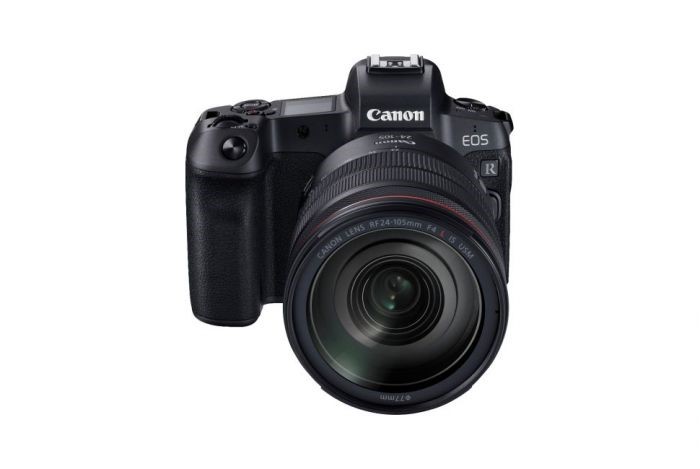
This is a full-frame camera with the following characteristics:
| Image Sensor Format | Full frame |
| Type of color filter | Primary colors |
| Image Sensor Cleaning | EOS Integrated Cleaning System |
| Effective Pixels | 30.3 megapixels |
| Sensor type | 36 x 24 mm CMOS |
| Total pixels | Approx 31.7 megapixels |
| Aspect ratio | 3: 2 |
All specifications
Price – 220 000 rubles. Cherry on the cake – a new lens mount, incompatible with the previous ones.
The eternal competitor is not far behind – Nikon now also has a full-frame mirrorless camera with excellent characteristics.
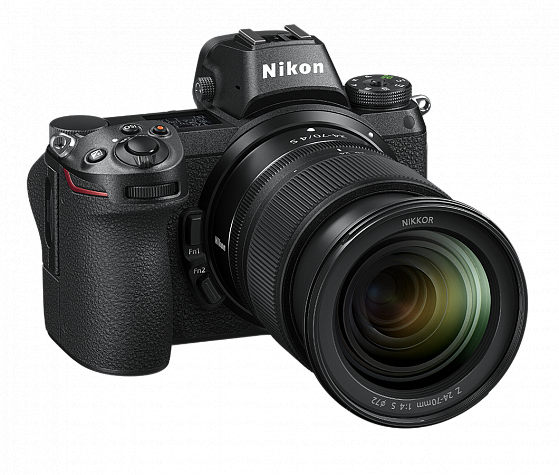
| Matrix format | FX (Full Frame) |
| Type of matrix, size | CMOS: 35.9 mm x 23.9 mm |
| Effective Pixels | 45.7 million |
| Processor (ADC) | EXPEED 6 |
All specifications
The Z 7 + lens 24-70 / 4 S itself will cost the happy owner about 304,000 rubles.
What is the result? As a result, now every self-respecting brand has top-end full-frame mirrorless cameras – see Sony α9 and the full frame from Sigma. And now Nikon and Canon have also pulled themselves up. Apparently, compactness is becoming an increasingly important factor when choosing good optics.
Almost everyone has a full frame (Fuji, Olympus). Almost everyone has a stabilizer on the matrix. In general, yesterday's killer features are becoming something as familiar as recording video in 4K.
Only one thing does not change, and the technologies here (so far) are powerless. The main thing in photography is a sense of beauty and a hand from the shoulders. Because sometimes even on a budget smartphone on Android, you can catch a much better frame than on a top-end DSLR with a lens worth two such SLRs. But the rest is a matter of technology.





